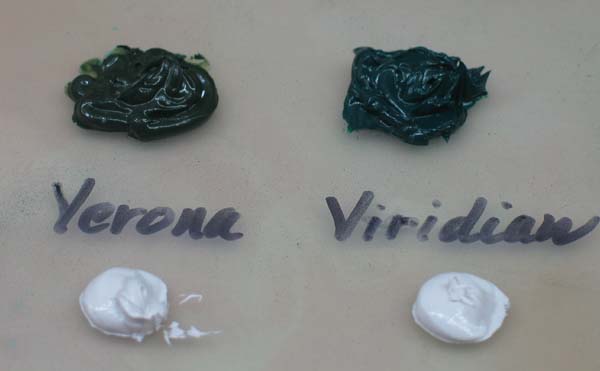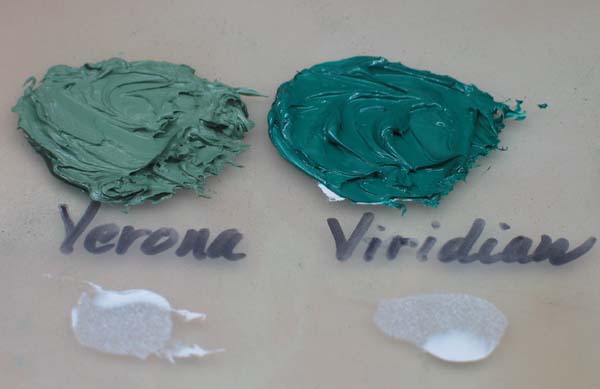Dr. Georg Kremer from Kremer pigments took the time to read my blog and wrote several comments, and I was quite honored. It is enormously helpful and educational to get information from an expert such as Dr. Kremer. He made a very interesting observation about my color tests on viridian and Veronese green from a couple of weeks ago.
Even though lead white has been the only white used in my paintings for this project, when this particular test/experiment was executed I was in a different part of my studio where lead white was not available. I used the titanium not realizing the critical impact it would have to the outcome of my testing.
I am very grateful he brought to my attention that titanium has a far stronger hiding power than lead white, and therefore could skew any results. The experiment has been re-done using lead white. If you remember in my first experiment, I talked about color strength. Many of the green earths are very low in tinting power, but are beautiful nonetheless. As a means of illustrating this concept, equal amounts of Veronese green and the modern pigment, viridian, were mixed into the same amount of lead white.
You can easily see how much of the Veronese green is necessary to alter the white as opposed to the viridian, which has a powerful tinting strength. Veronese is subtle and grayed will never overtake other pigments. Thank you, Dr. Kremer for the splendid advice!


